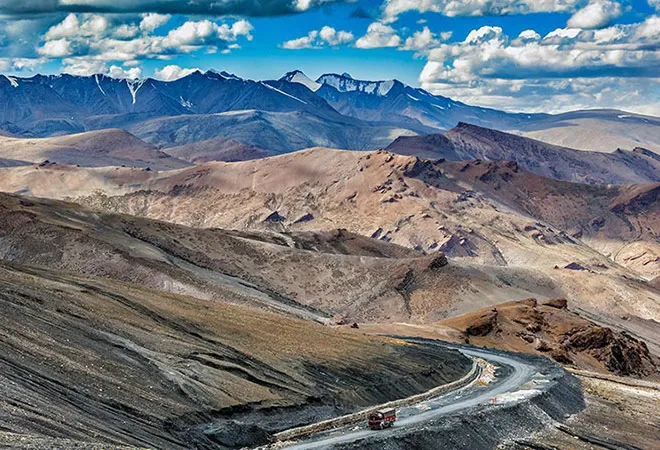
Comprising eight states, including Arunachal Pradesh, Assam, Manipur, Meghalaya, Mizoram, Nagaland, Sikkim and Tripura, Indian North Eastern Region (NER) is widely known both for its strategic location as well as for its rich natural resources. It has 5,182-kilometre-long international boundaries with five countries, including Tibet/China, Myanmar, Bangladesh, Nepal and Bhutan. Of these eight Indian states, Sikkim is often regarded as a brother; while Arunachal Pradesh, Assam, Manipur, Meghalaya, Mizoram, Nagaland and Tripura are called seven sisters.
The relation between Nepal and Indian NER is as old as the civilization of these two countries. In the past, the devotees from Nepal often used to go to Kamar Kamachha in Assam state of India, one of the important Shaktipithas, to pay homage to the deity. But it was only after the Treaty of Sugauli (1816) between Nepal and India happened that people from Nepal started settling in Indian NER on a massive scale.
The Treaty of Sugauli enabled the Gurkhas (Nepalis) to get easy recruitment in the British Indian Army as well as in Assam Military Police. Many of the Gurkhas after their recruitment in security services were placed in the Indian NER. But those people from Nepal who went to Indian NER in connection with their jobs rarely returned to Nepal even after they retired from service and they settled there. This was so because they found more opportunities there as compared to Nepal. Later on, many other people from Nepal also migrated to that land.
Reports are that the Gurkhas settled in Nagaland in 1835; while they made their presence in Manipur in 1819. In Mizoram, they settled in 1865 and Meghalaya they settled in 1824. Within a few decades after the Sugauli Treaty, the Gurkhas settled in almost all the Indian NER.
Contribution of the Nepalese in the development of India’s NER is encouraging. Apart from the security service, those people also helped develop cattle farming and dairy industries by clearing the thick forest land of the region. They contributed a lot for the development of Shillong, the capital of Meghalaya state, which is often called the Scotland of the East for its resemblance with Scotland of Europe. At several places in the region, the Gurkhas also promoted Hindu culture by introducing Durga Puja.
Contribution of the Nepalese in the development of India’s NER is encouraging. Apart from the security service, those people also helped develop cattle farming and dairy industries by clearing the thick forest land of the region
Since, there is a substantial presence of the Nepalese in Indian NER, the hold of Nepali speaking population in political affairs increased remarkably. While the number of Nepali speaking population in Assam is over two million, it is more than a million in West Bengal. Nepalese speaking population swarm in Sikkim, Meghalaya, Mizoram, Manipur, Arunachal Pradesh and Nagaland. Significantly enough, 63 per cent of the population in Sikkim speak Nepali. The clout of the Nepali speaking population in the region is well known as in Assam the number of Indian Nepali-speaking MLA is 13. Even certain Indian Nepali speaking MPs from NER have taken oath in Lok Sabha, the lower house of parliament in India, in the Nepali language.
However, since the late 1970s, the problem of illegal migration caused Bodo and other movements against the foreigners settled in Indian NER. In the “Sons of the Soil” movement in this region, demand for the deportation of foreign nationals grew all the time high. But because the 1950 Treaty of Peace and Friendship between Nepal and India accords national treatment to the citizens of one country in another country, such anti-foreign movement hardly affected the life of the common Indian Nepali speaking population in the region.
The cultural and social links between Nepal and Indian NER could prove a great asset in initiating sub-regional level between the two countries. Additionally, the complementarities that exist in the economies between the two regions also raise the prospects for such cooperation.
The cultural and social links between Nepal and Indian NER could prove a great asset in initiating sub-regional level between the two countries. Additionally, the complementarities that exist in the economies between the two regions also raise the prospects for such cooperation.
Both Nepal and Indian NER are part of the South Asian Association for Regional Cooperation (SAARC) and Bay of Bengal Initiative for Multi-Sectoral Technical and Economic Cooperation (BIMSTEC). Additionally, Nepal and India have also joined Bangladesh, Bhutan, India, Nepal (BBIN) Initiative, which is another sub-regional group of these four countries. Ever since the beginning of BBIN Initiative, its member countries have been trying to develop a seamless cross-border movement of people, goods and vehicles among themselves. Towards this end, the Transport Ministers of BBIN countries also signed Motor Vehicle Agreement (MVA) at Thimpu, Bhutan in June 2015 to facilitate passenger, personal and cargo vehicular traffic. Such a development has increased the prospects of seamless flow of goods, people and services between Nepal and the Indian NER.
Once the MVA is operationalized, Nepal and Indian NER would have hassle-free road linkages that could reduce travel time and cost of transportation of goods. It might also enhance intra-state and inter-state trade, including border trade, especially between Nepal and Sikkim. Also, this could provide Nepal access to larger markets in Indian NER both for the export and import trade. Nepal is also likely to benefit from ASEAN markets as India, Myanmar and Thailand have already agreed to sign MVA agreement of the same framework as it was signed among four SAARC member countries, including Bangladesh, Bhutan, India and Nepal.
Once the MVA is operationalized, Nepal and Indian NER would have hassle-free road linkages that could reduce travel time and cost of transportation of goods. It might also enhance intra-state and inter-state trade, including border trade, especially between Nepal and Sikkim
However, higher non-tariff barriers, very poor road conditions, lack of the direct railway and air connectivity, apart from the absence of energy grids and communication facilities, pose some major challenges for the development of sub-regional cooperation between Nepal and Indian NER. If some of these challenges are addressed, the sub-regional cooperation through trade, investment, transport and other related activities could prove game-changer in ensuring the greater transformation of the economies of the two countries. Success on this front could also lead to sub-regional cooperation between Nepal and Bihar and Uttar Pradesh, which have an even bigger role to play in the economic transformation of the two countries. All such prospects for the development of Nepal and India are mainly because of the open border system between the two countries. In this regard, Bangladeshi Transport Minister Obaidul Quader rightly said on the occasion of signing BBIN agreement in 2015, “Let our border no longer be treated as separators but connectors”.
The views expressed above belong to the author(s). ORF research and analyses now available on Telegram! Click here to access our curated content — blogs, longforms and interviews.




 PREV
PREV


